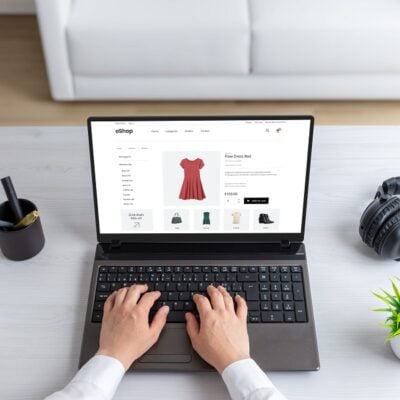You know your business needs a website. Printed yellow page ads, newspapers, and other forms of print advertisement just aren’t what they used to be without offering more marketing solutions that pertain to the here-and-now. When someone wants information, they pull out their smart phone or laptop and invoke the magic word: Google. Thus, a strong website with good search rankings translates to more leads, more sales, and more money. Tweet This
However, building a solid website can become more of a hassle and a headache than it seems to be worth. Why? There are just too many questions that need to be asked—and then answered. Questions like: What colors look the best? How should the site be laid out? Should I include pictures of my cat? How many pages should I have? Do I need a blog? Where am I going to get content? Should I try to build it myself or pay someone to do it? Are you sure I don’t need pictures of my cat?
Where Do I Start?
Knowing where to begin can be tricky. It’s tempting to jump straight to the fun stuff like color schemes, slideshows, and Twitter feeds. Sadly, this is the first mistake that most companies make, and it can cost them dearly. Instead, there are two magic questions that need to be answered before you choose a single color or even consider a site feature. Volumes of books and articles have been written about these questions, but they are so simple that they are often overlooked. These questions are “Who is my customer?” and “What is a win?”
Who Is My Customer?
As a business owner, this probably isn’t a new question. Hopefully, you’ve already determined your target demographic and worked to make your company appealing to potential customers. But in order to create a website that will give your clients a personal experience with your company, you need to understand more about who they really are. And to do that, you need to ask yourself some questions.
For example, let’s say your target audience is upper middle class, over sixty, and retired. What can you safely bet about their needs, wants, and desires? Well, many of them likely have trouble reading small text, are concerned about staying healthy and active, and completely adore their grandchildren. Knowing this information helps you answer several design questions. For starters, you know you should probably use a larger font that is easy to read, and you may want to include images of active seniors interacting with young children. Now consider the different decisions you would make if your ideal customer were a person in their early twenties who likes to ski and snowboard. See the difference?
As you start to uncover who your target audience is, you can ask yourself these questions to try to learn more about them:
- What makes them happy?
- What needs do they have?
- What do they want most in life?
- What aggravates them?
- What do they value?
- What challenges do they face?
And the list goes on. The reality is you can NEVER know too much about your clients. I recommend sitting down and writing out the answers to as many of these questions as you can think of—just make sure that your answers are based on facts and not on your personal opinions and biases. This document, coupled with your answer to the next question, can be the basis of every other decision you make as you plan out your website.
What’s a Win?
When you play basketball, it doesn’t matter how many times you bounce the ball. In football, it doesn’t matter how many times you throw a pass or how good you look in pads and a helmet. What matters in both games is how many points you score. If you never score, you never win.
A win for a business owner can be summed up in one word, and it rhymes with “honey.” If your website doesn’t increase your bottom line, then it’s a waste of time and resources. Queue the headache! So the next question is “What needs to happen on the website so that the business makes money?”
If you run an ecommerce site, you get a win every time you sell a product. If you aren’t selling products directly from your site, then you go after the next best thing: sales leads. Leads from the internet come in many different forms and include anything from phone calls and emails to live chats and social mentions. However, not all leads are created equal. While it’s a good idea to give your customers plenty of ways to contact you, it’s a great idea to determine the lead type that converts the best for your company. Once you know what your ideal method is, you can then design your site to make it super easy for people visiting it to find that method. Tweet This
Here’s an example of what I mean. Several years ago, I worked for a painting company that had an elaborate network of websites designed to generate leads for residential painting projects. Each website had a phone number, a form to request more information, and a live chat option. After the sites had been up and running for several weeks, we analyzed the leads and compared how well they converted to sales. The disparity was overwhelming. We found that while the vast majority of the leads were from the online form, most of the sales happened when people called the phone number.
Looking back, this shouldn’t have been a surprise. We had six well-trained customer service agents who did an excellent job converting phone calls into sales. Wanting to capitalize on this, we made some big changes to our websites. We started by increasing the size of the phone number and placing it front and center on every page. At the same time, we also decreased the size of the form and made it less prominent. A few months later, we looked at the numbers again. Sure enough, our phone leads had gone up and, as a result, so did our revenue.
How Do You Eat an Elephant?
Knowing your customer and what you want them to do when they come to your site is a powerful beginning, but there is still a long way to go and several other questions that need answers before you start planning your photo galleries and animations. Thankfully, the answers you come up with for these first two questions will guide you to the right conclusions on everything that follows.
However you choose to approach your website, don’t get discouraged. There will always be more questions to answer, but knowing where to start puts you ahead of the curve. Just follow the advice my dad used to give me when I was growing up. When I was faced with a large task, he would ask me, “How do you eat an elephant?” The answer was always the same: “One bite at time.”
For a quick start in creating your own, mobile responsive web design to promote your business online – visit MyBoostSite.com or give BoostSites a call at 877-958-5950.









3 Comments
Comments are closed.